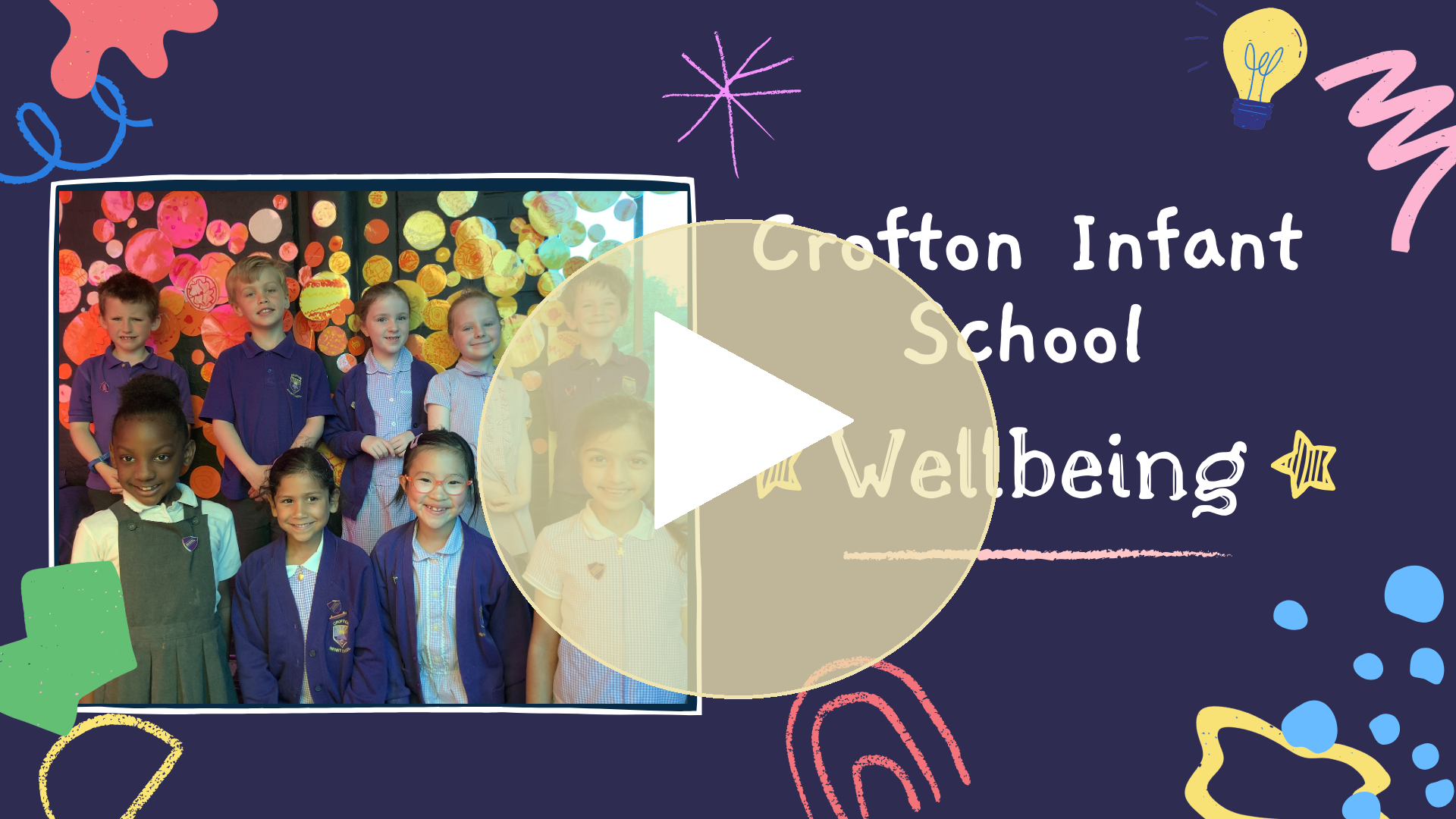
Provision
Crofton Infants Wellbeing curriculum
Draw and Talk
Drawing and Talking Therapy is the number one alternative to CBT and direct talking therapies, which can often be confronting or limiting in the processing of pain or trauma. Through a 12-week cycle of sessions, this non-intrusive tool allows children to bring what they need to their sessions, utilising drawing as a way to help them express their feelings in a way other than ordinary verbal language. The Drawing and Talking therapeutic approach allows children to discover and communicate emotions through a non-directed technique. This is what sets Drawing and Talking apart from existing solution-focused and cognitive based therapies and interventions.
Crofton Charities
Crofton Infants have set up a token scheme to help develop children’s understanding and awareness of charity. The children earn tokens for showing our core ‘Crofton Values’ and choose which of our termly local charities they would like to support. At the end of term, the term’s pot of charity money collected at the start of the year, is split proportionally between the three charities and children are really enjoying helping to support our community.
Friendship Heroes
In the Infant School, we have a wonderful team of Friendship Heroes. These children are from each Year 2 class and are chosen by their teachers to be a positive influence on the playground. These children put on their superhero capes and transform into heroes, helping anyone that may look sad or lonely in the playground and helping them get involved in playground games. The friendship heroes are overseen by Mrs Whitting, who is a Year 2 Teaching Assistant. The children love taking on this role and they have helped to make the playground an even friendlier place!
Zones of Regulation
At Crofton, we understand the importance of talking to the children about their feelings and use Zones of Regulation to support their emotional literacy. Each morning and afternoon, as the children come in to class, they will put their names in one of our zones of regulation buckets (red, yellow, blue or green). The adults in the classroom will then have an opportunity to talk to children about their feelings on a 1:1 basis when needed. These zones buckets are further supported by our PSHE lessons on managing and understanding emotions. In each classroom there is also a Zones of Regulation display which contains positive strategies to help the children 'get back to green' ready for learning. Our aim is for all children to be able to name their emotions and learn healthy coping strategies that they can use and develop as they move through Crofton and beyond.
Sand Therapy
This is a creative 1:1 therapy offered by our ELSA, which helps children expresses their understanding of themselves, their world, and aspects of their reality through figurines or miniatures.
Theory of Mind
This short term intervention aims to support children's understanding that others' beliefs, desires, intentions, emotions, and thoughts may be different from one's own.
Worry Wobbles
This intervention focusses on normalising experiencing a range of emotions and offers the children a safe space to express their worries while also teaching them many strategies that they can use to manage their fears or worries in the future.
Nurture Club
Nurture groups are designed to address the social and emotional needs that can hamper pupils’ learning. Nurture Club is a small, short-term intervention available for those children that need it. The aim is to support the child with building positive relationships with both staff and peers in a supportive environment. Effective nurture group practice follows the six principles of nurture. Our assessment tool the Boxall Profile® determines which pupils would require to be in the nurture group based on their social, emotional, and mental health needs.
Friendship/Social Skills Group
This intervention group is a short term intervention with the aim of further equipping the children with the skills needed for maintaining successful relationships. This group will focus on understanding emotions and the impact of those emotions, developing social skills such as team work and sharing, as well as building confidence and self esteem.
Listening Ear
As the need arises, some children are provided with a ‘Listening Ear’ who is a member of staff available to check in and be a point of contact for the child when needed.
PSHE/Circle Times
Every week, the children will take part in a PSHE lesson or a Circle time session. These sessions aim to develop the children’s confidence, self esteem and help them understand and manage their emotions.
Book Tombola
Each week, children are randomly selected to come and celebrate their work with the Senior Leadership Team. The children bring all their books and get a chance to show SLT their amazing work. Both the children and SLT really look forward to this time together, sharing their learning over a drink and a biscuit.
Celebration Assemblies
Each week the children’s achievements are celebrated in assembly. Each class teacher nominates two ‘stars of the week’ as well as a ‘handwriting hero’ and certificates are awarded in assemblies by a member of the Senior Leadership Team. There is also an extra special Achievement Assembly at the end of each half term where children are given special Achievement Awards and awards for demonstrating one of our Crofton Values.
Top Table
Each week in Year 2, the stars of the week are invited to an extra special lunch with the Senior Leadership Team. The children really enjoy this time as the table is decorated beautifully, they skip the queue for lunch, and get to spend some important time eating lunch and talking about how wonderful they are!
Sensory Circuits
For those children that need it, we provide sensory circuits twice a day. Sensory circuits are based on the theories of sensory integration and sensory processing. A sensory circuit is a form of sensory integration intervention. It involves a sequence of physical activities that are designed to alert, organise and calm the child. The sensory circuit aims to facilitate sensory processing to help children regulate and organise their senses in order to achieve the ‘just right’ or optimum level of alertness required for effective learning. The circuit should be an active, physical and fun activity that children enjoy doing.
Care Dogs
As a school, we are lucky enough to have two Care Dogs, Daisy and Lemmy. The children really enjoy reading to the dogs and coming to show them their work.
Wellbeing Curriculum
